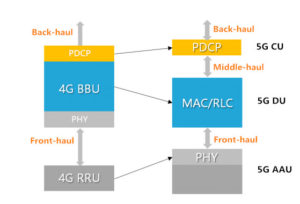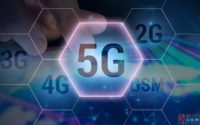5G Is Coming
With the rapid development of the mobile communication industry, 5G has become a hot topic globally. Compared to 2G, 3G and 4G, the future of 5G network cannot be underestimated. 5G will be built upon the foundation created by 4G LTE to allow people to send texts, make calls, and browse the web. It will increase the speed at which data is transferred across the network. How will this new wireless revolution change our life and what can we do to prepare for the upcoming 5G network?
What Is 5G Network and Why Is It an Urgent Necessity?
5G stands for the fifth generation of the next wireless mobile standard. The 5G New Radio (NR) specification was released by standards body 3GPP in late 2017, with the chips already being built ‘5G-ready’. The upgraded 5G performance targets include high data rate, lower latency, energy saving, cost reduction, higher system capacity and massive device connectivity.

Greater Speed: 5G vs 4G
How fast is 5G? It is estimated that the data transmitted over 5G wireless broadband connections could travel at rates as high as 20 Gbps. Unlike 4G, the 5G wireless signals will be transmitted via large numbers of small cell stations located in places like light poles or building roofs. Consequently, the demands for optical transceivers deployed in the 5G cell stations will greatly increase accordingly.
Lower Latency with Higher System Capacity
The 5G network will reduce latency significantly with faster load times. It is estimated to offer latency of 1 ms or lower for applications that require real-time feedback. It means that you’ll see very little delay or lag when you browse on your networking devices.Thanks to the more available bandwidth and advanced antenna technology, the 5G network will enable a sharp increase in the amount of data transmitted over the wireless systems. Meanwhile, the expenses involved in 5G network will be reduced substantially.
How Does 5G Work?
Due to the increase in the data transfer speed, the 5G deployment needs to upgrade the optical transport network it bears. Compared with the BBU and RRU two-level architecture of the 4G LTE access network, the 5G RAN will evolve into a three-level structure of CU (Centralized Unit), DU (Distribute Unit) and AAU (Active Antenna Unit). In terms of the application scenario, the 5G communication optical modules show 3 types: Front-haul, Middle-haul, and Back-haul transmission.

Conclusion
No matter which kind of network implementation is hosted by 5G technology, the 5G communication optical module is ultimately indispensable. The cost-effective and high-rate optical transceivers which can support long-distance transmission are the most powerful backups to achieve a broad and low-cost 5G network coverage. The future development of 5G communication optical modules will be dominated by 25G optical modules and 100G optical modules. To pave the way for the upcoming 5G network, the first step is to scale the 25G tunable optical module industrialization, and then minimize 100G optical transceivers’ expenses, especially in long-haul transmissions. TARLUZ is striving to be the innovator in 5G communication optical transceivers manufacturing. We’re developing the diversified standard 5G communication optical modules including the 25G SFP28 and 100G QSFP28 to comply with the industrial standard of the 5G network.
